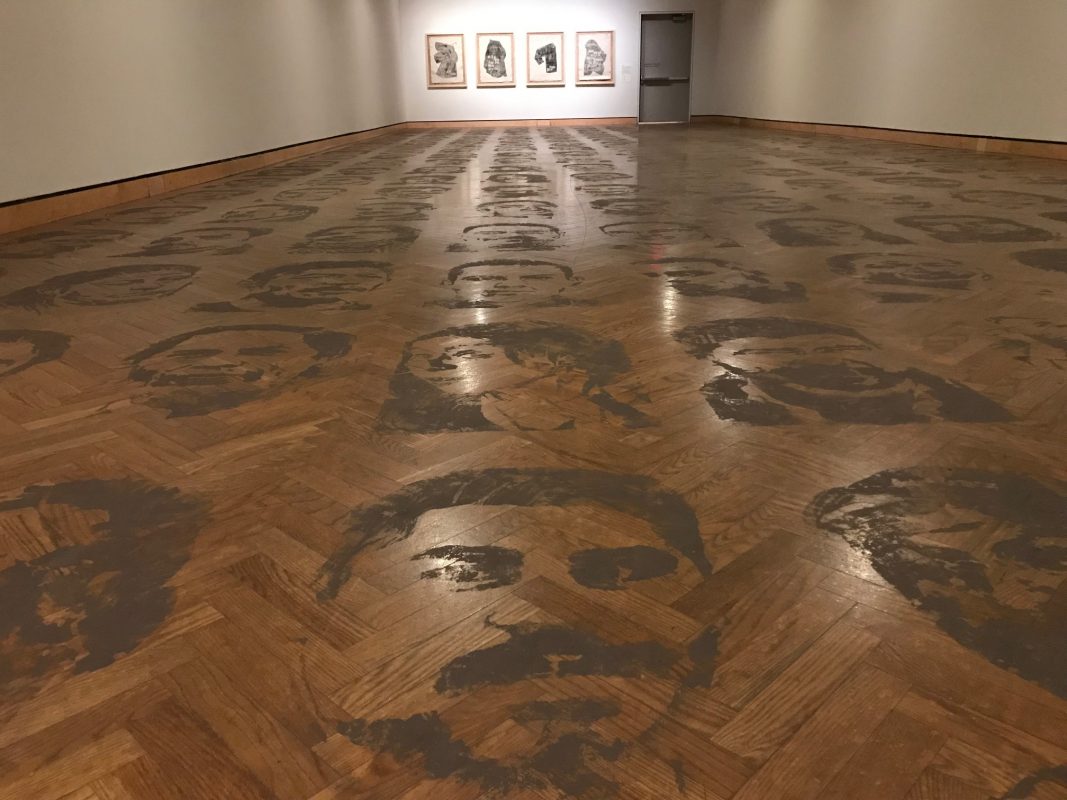Blog
Fresh perspectives on art, life, and current events. From deep dives to quick takes to insightful interviews, it’s the museum in conversation. Beyond the walls. Outside the frame. Around the world.
The Latest

The American War: “Artists Reflect” recounts the Vietnam War from the Southeast Asian perspective
The Vietnam War defined a generation of Americans in the 1960s and ’70s, from campus protests to disillusionment to, of course, death. More than 58,000 Americans died in the conflict. But for Southeast Asians, in Vietnam, Cambodia, and Laos, the war was always different. It was longer, for one thing, having begun in Vietnam in ...

What a news printer, in a show of Vietnam-era art, says about our modern media age
When I was 23 years old, fresh out of journalism school, I went to work at The Associated Press bureau in Minneapolis. This was in 1995, just before the internet and email became widely accessible, and the AP still distributed the news — all the news that was fit to print — by printer. In ...

How we created a playlist for “Artists Respond,” an exhibition of Vietnam War-era art
By Esther Callahan The Vietnam War, which ended 44 years ago, may seem long ago and far away. But the damage remains acute: more than 58,000 Americans and an estimated 3 million Vietnamese dead, hundreds of thousands wounded, and a shattered faith in the United States government. In the end, after decades of trying to ...

Why the Vietnam War still matters: Connecting the art of the 1960s to our time
On the morning of January 28, 1976, Kim Jones stepped into his combat boots, pulled a nylon stocking over his face, and slathered himself in mud. He strapped an unruly lattice of sticks — held together by twine and electrical tape — to his back, as though he’d been lying on a forest floor for ...

Meadow Muska on photographing illicit love, the women’s land movement, and why she’s come forward
By Casey Riley and Tim Gihring Meadow Muska was born in St. Paul, Minnesota, in 1952, and grew up in the nearby suburb of Roseville. She earned a degree in photography from Ohio University and eventually got a job as a staff photojournalist with a small-town newspaper in Oregon. It didn’t last long. She was ...

Compassion over politics: Jonathan Herrera Soto’s “In Between / Underneath (Entremedio / Por Debajo)”
Do not dismiss Jonathan Herrera Soto’s exhibition “In Between / Underneath (Entremedio / Por Debajo)” as yet another political commentary. The exhibition, which is on view in Mia’s U.S. Bank Gallery through November 3, consists of three print series: Love Poems/Poemas de Amor, Untitled/Sin titulo, and In Between / Underneath (Entremedio / Por Debajo). In each of these works, ...

A house of awe: Joe Horton on his “Vessel” film, modern alchemy, and the future of museums
Joe Horton grew up in Milwaukee, studied psychology at the University of Wisconsin–Eau Claire, and eventually gravitated to the Twin Cities, where his mix of music, theater, visual art, and philosophy has attracted a cohort of steady collaborators. (Horton would call it a collective if that didn’t sound so precious.) He is currently the artist-in-residence ...

How can empathy help shape an exhibition?
“What if the way you experience the world, your perspective, and all that informs it were turned on their head?” The question is posed on the wall label for three films presented in the “Mapping Black Identities” exhibition now on view at Mia. It’s a disarming question, inviting the visitor into the space as an active ...

Julie Buffalohead on tricksters, colonizers, and the state of Native art
In the world of Julie Buffalohead, coyotes wear tutus, host tea parties, and play with shadow puppets. They, and their fellow animals, are allegorical figures — stand-ins for subjects both overtly political and deeply personal. Now, one of Buffalohead’s anthropomorphic fables, called The Garden (a sly commentary on the controversy over a scaffold sculpture at the Minneapolis Sculpture ...

How the colors in “Hearts of Our People” enhance the exhibition
When Mia began designing “Hearts of Our People: Native Women Artists,” the first major exhibition of work by Native women artists, the museum wanted to avoid overt references to indigenous motifs, like zig-zag patterns or crosses. For a while, it even considered painting the walls plain white. Ultimately, the decision was made to go with three ...

